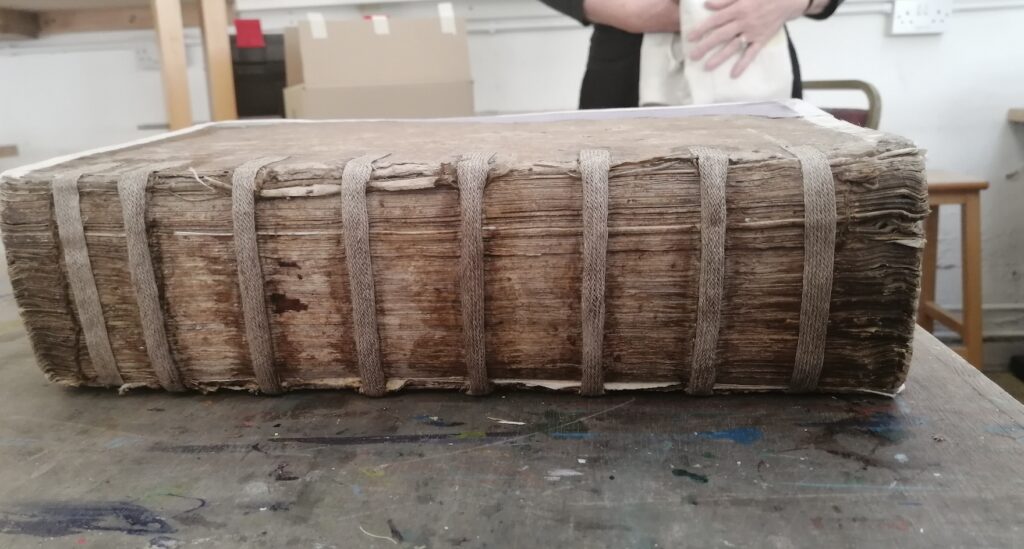Preserving Literary Treasures for Future Generations
Books have been an integral part of human history, carrying knowledge, culture and stories passed down through generations. However, the passage of time can take a toll on these literary treasures, leading to wear, tear and decay.
I’m sure we all have a favourite book lying on a shelf, much manhandled and starting to look fragile – but something we cannot part with. It has an emotional link that was part of our life’s story. This is where I can help, breathing new life into aged volumes and ensuring that the wisdom they contain endures for future generations.
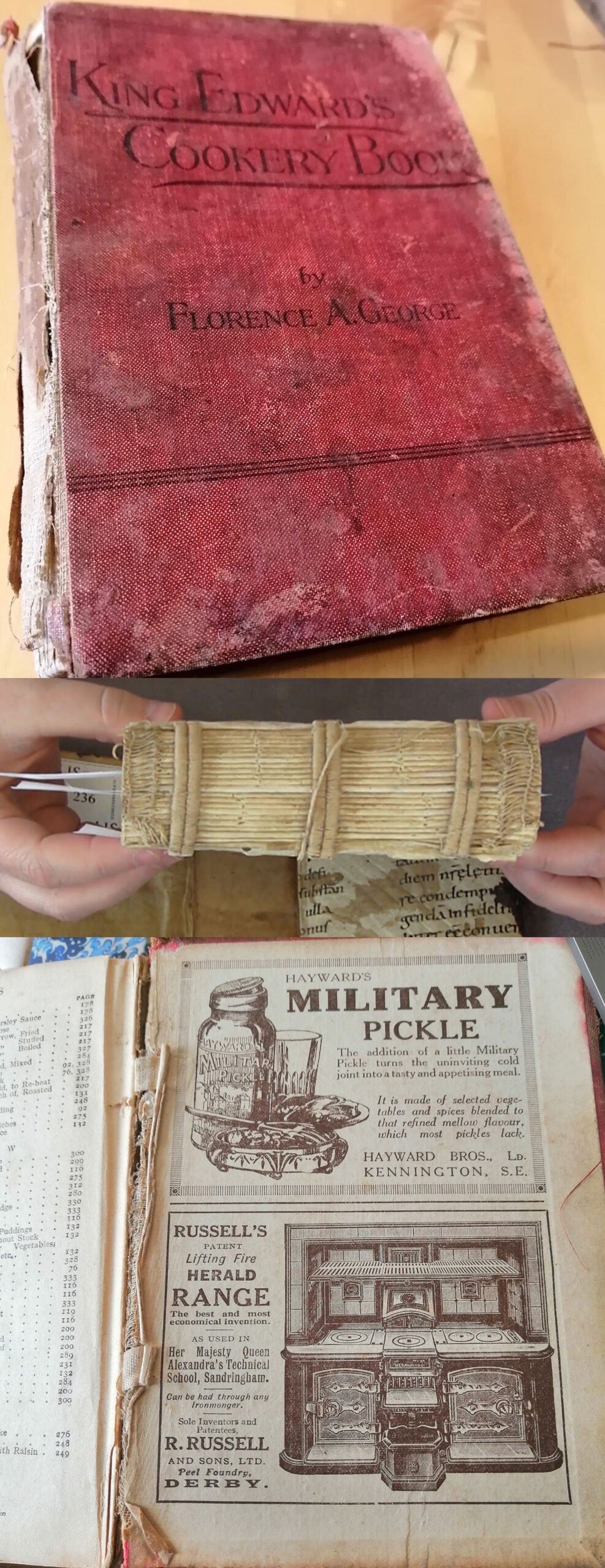
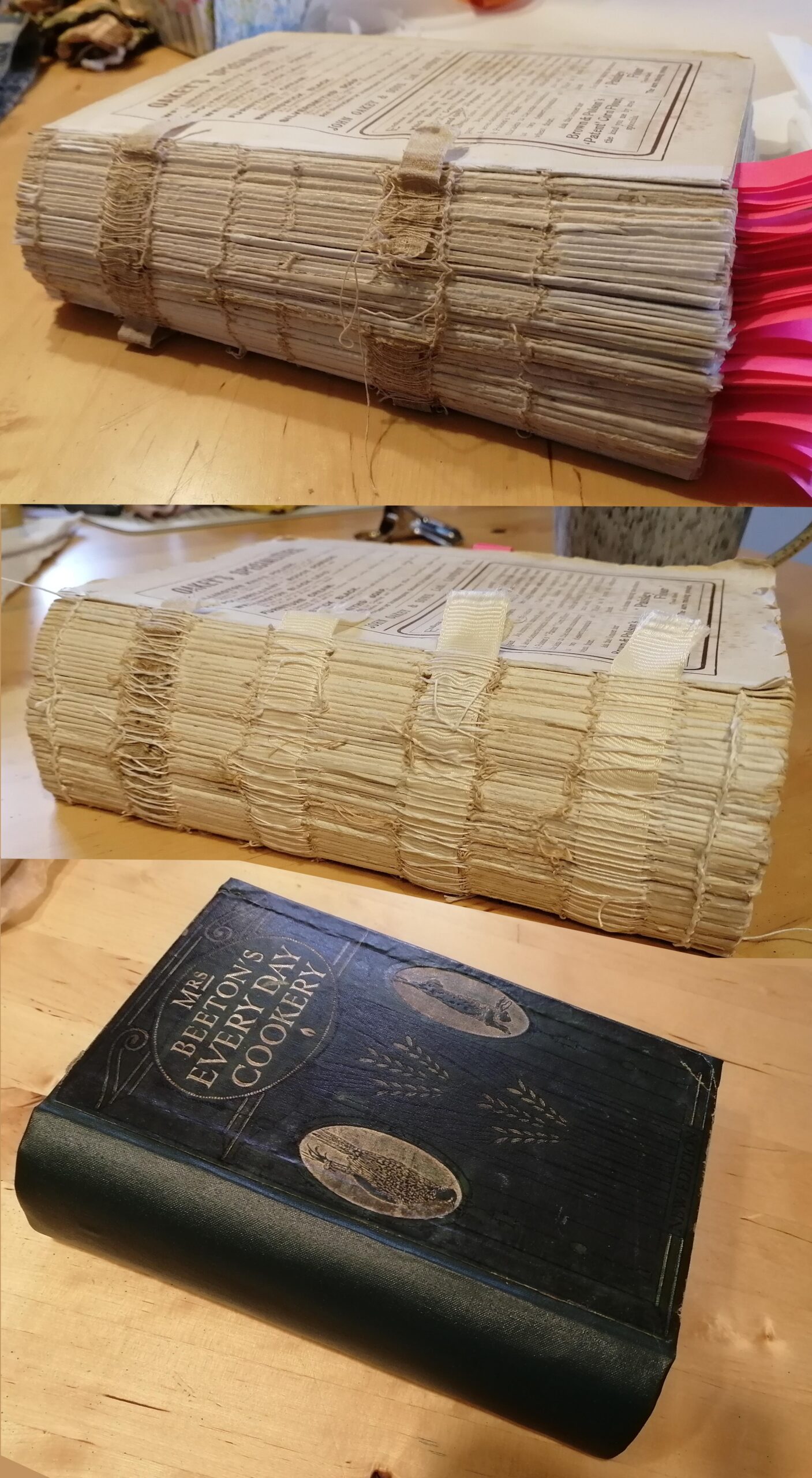
The Need for Book Restoration
Books are susceptible to wear and tear over time. Factors such as humidity, light exposure and improper handling can lead to the deterioration of paper, bindings and even the ink itself.
Book restoration is not just about repairing physical damage; it’s a meticulous process that involves preserving the historical and cultural significance of a book.
While the goal of book restoration is to breath new life into aging volumes, it is important to strike a balance between preserving the historical integrity of a book and making it accessible for use.
As you can see from the photo examples below, I have worked with books that where hand sewn and that had fabric covers. I have not worked on preserving leather bound books. I can replace covers with leather but not repair leather. (That’s another skill set – as I’m sure many will appreciate if they watch BBC’s The Repair Shop and the wonderful book restoration work of Christopher Shaw and the leather work of Suzie Fletcher).
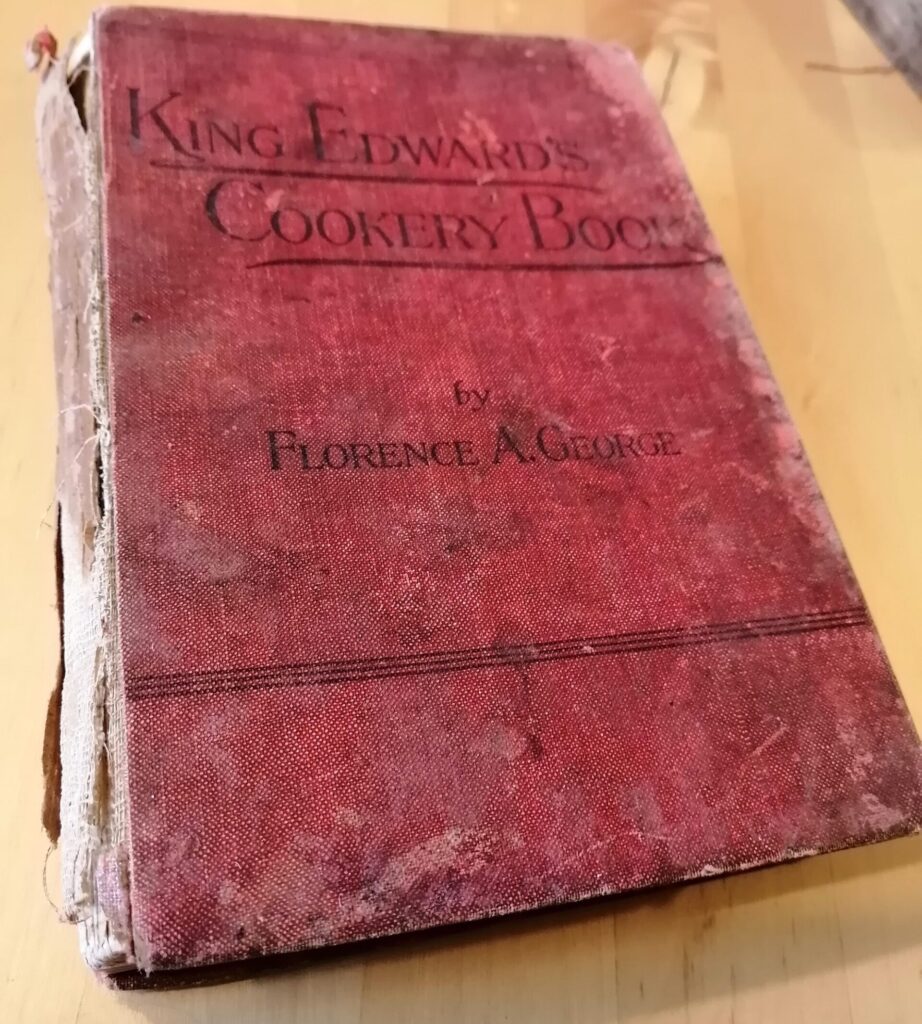
Book Restoration:
Before work began – the front cover.
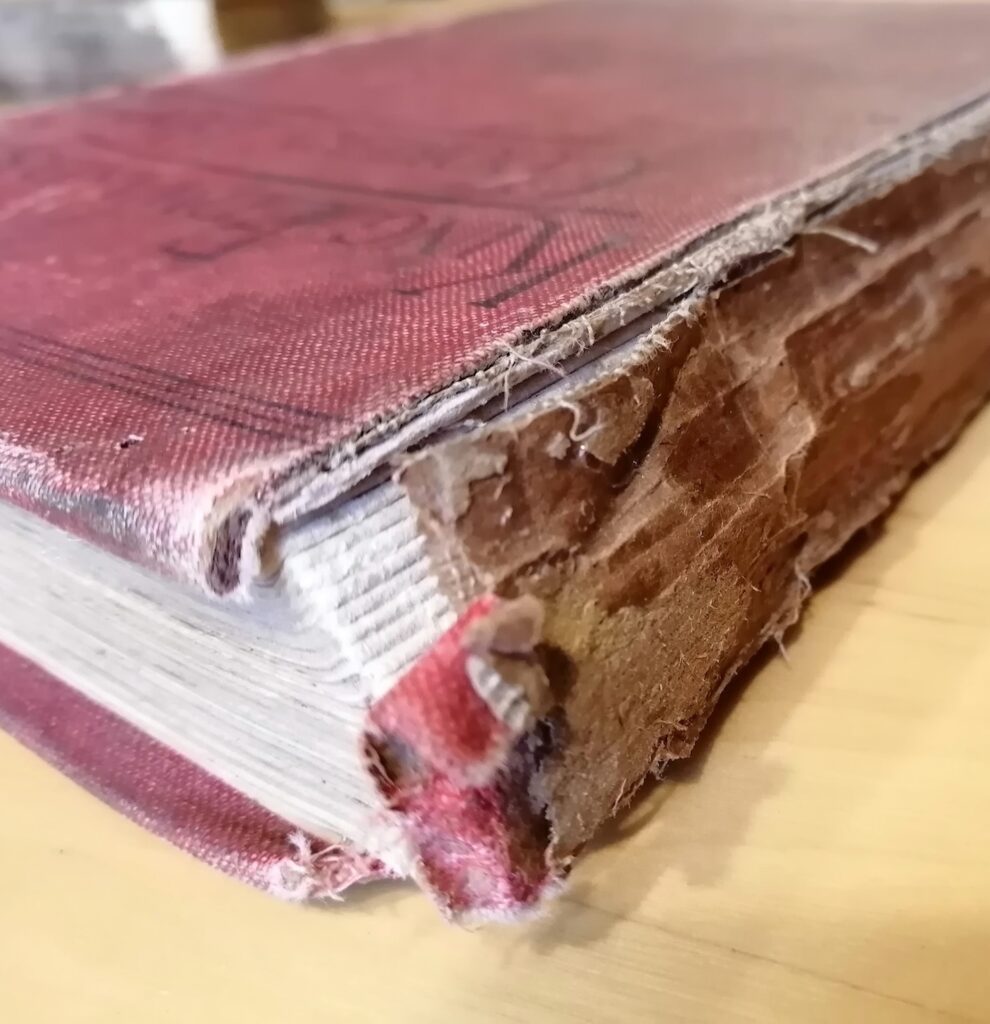
Book Restoration:
Deterioration of the spine.
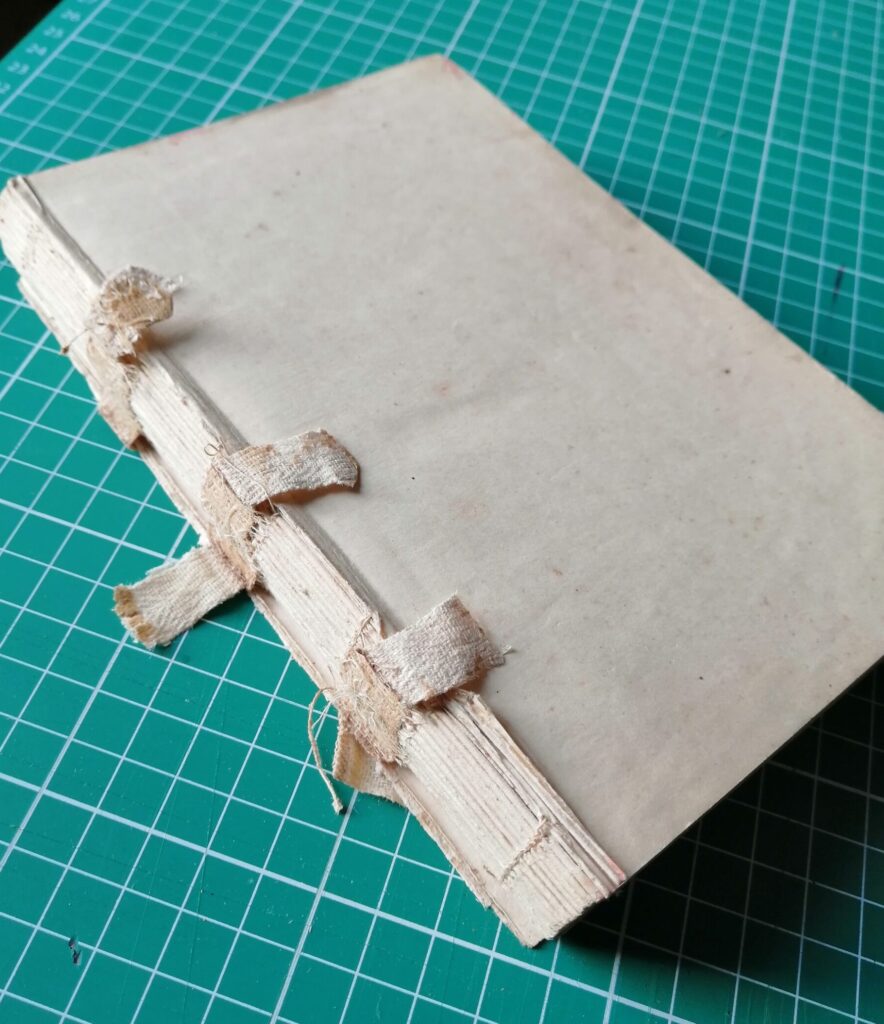
The Spine;
Needed to be stripped back and replaced.
The Restoration Process
- Assessment – Before any work begins, a thorough assessment of the book’s condition is conducted. This includes examining any damage, loose pages, stains or other issues that need attention. This initial step is crucial in creating a tailored restoration plan.
- Cleaning and Surface Preparation – Dust, dirt and other contaminants are gently removed from the book’s surface. Special care is taken to avoid further damage and any loose or detached elements are secured to prevent further deterioration.
- Mending and Repairing – The heart of the restoration process involves repairing structural damage. This can include fixing torn or loose pages, reinforcing bindings, and repairing damaged covers. I can use acid-free, archival-quality materials to ensure that the repairs are durable, sympathetic to the original construction and do not contribute to further deterioration so they can be reversed in the future if needed.
- Stabilisation and Preservation – Protective measures, such as making of slip covers or clam-shell boxes, can be employed to shield the book from environmental factors
- Rebinding – In cases where the original binding is beyond repair, I may undertake the delicate task of rebinding. This can involve re-stitching the spine and re-supporting ribbons across the spine and repairing or creating new covers that are in keeping with the style of the original, ensuring a seamless blend of old and new elements.
Book Restoration For You
Book restoration is an investment for future generations and a way of revitalising our literary treasures. In a world where digital media is becoming increasingly prevalent, this reminds us of the tangible and timeless beauty held within the pages of a well-preserved book.
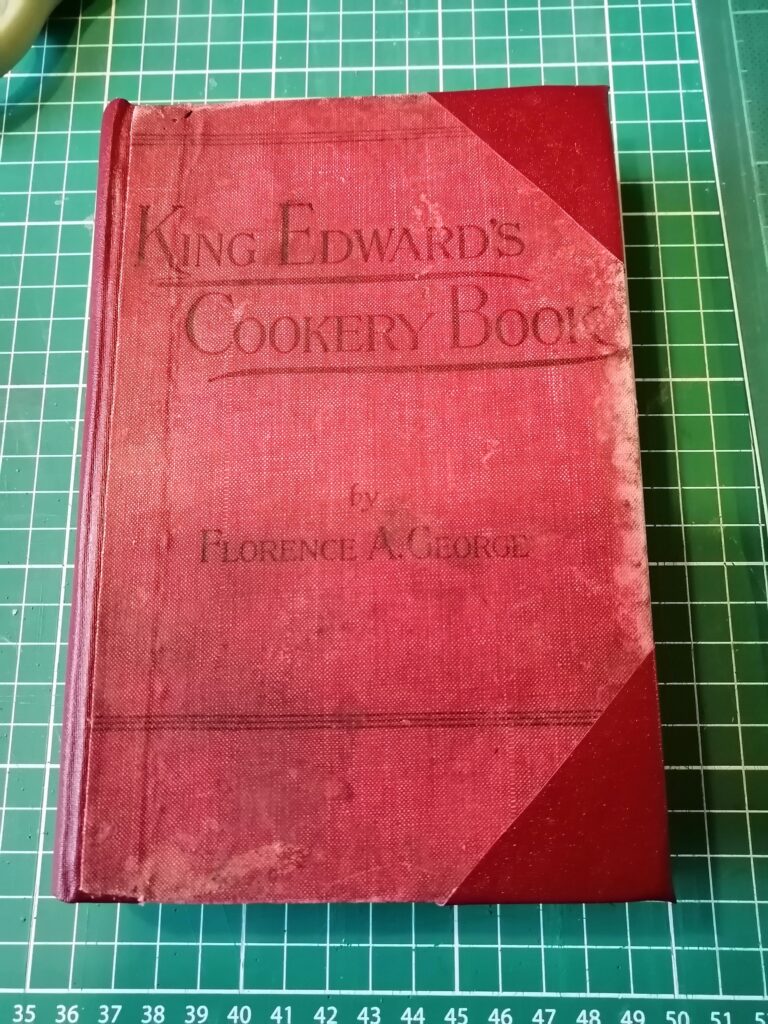
After Restoration:
Front cover after restoration. Corners were recovered.
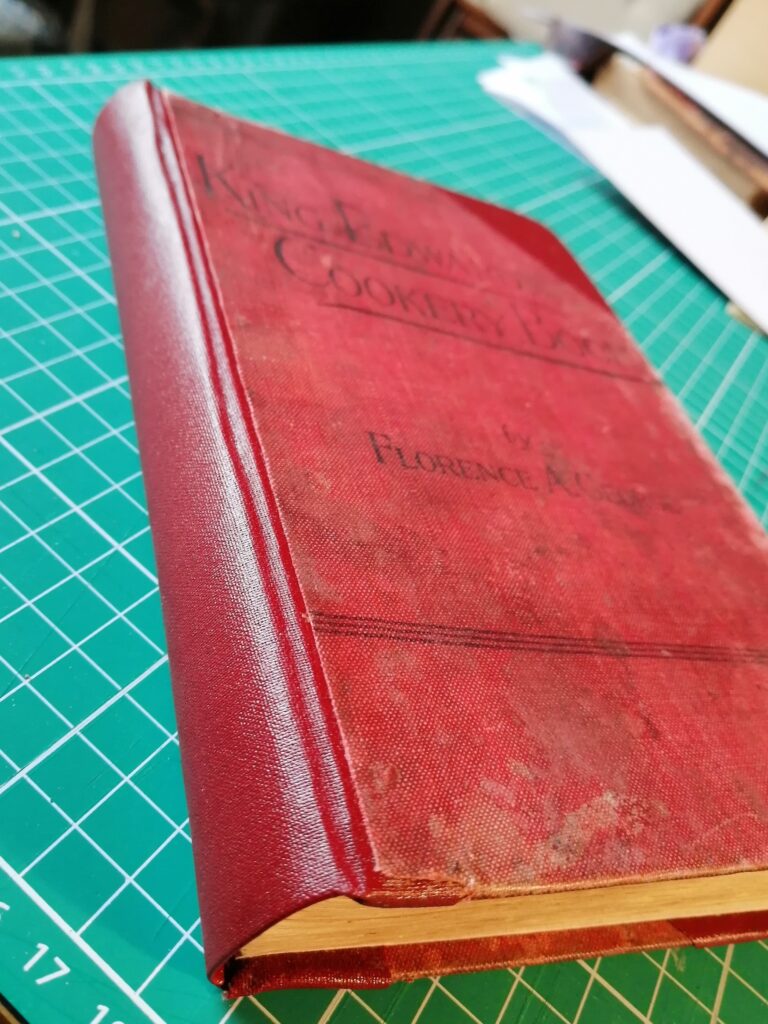
After Restoration:
Spine recovered. You can see it was inserted under original font cover.
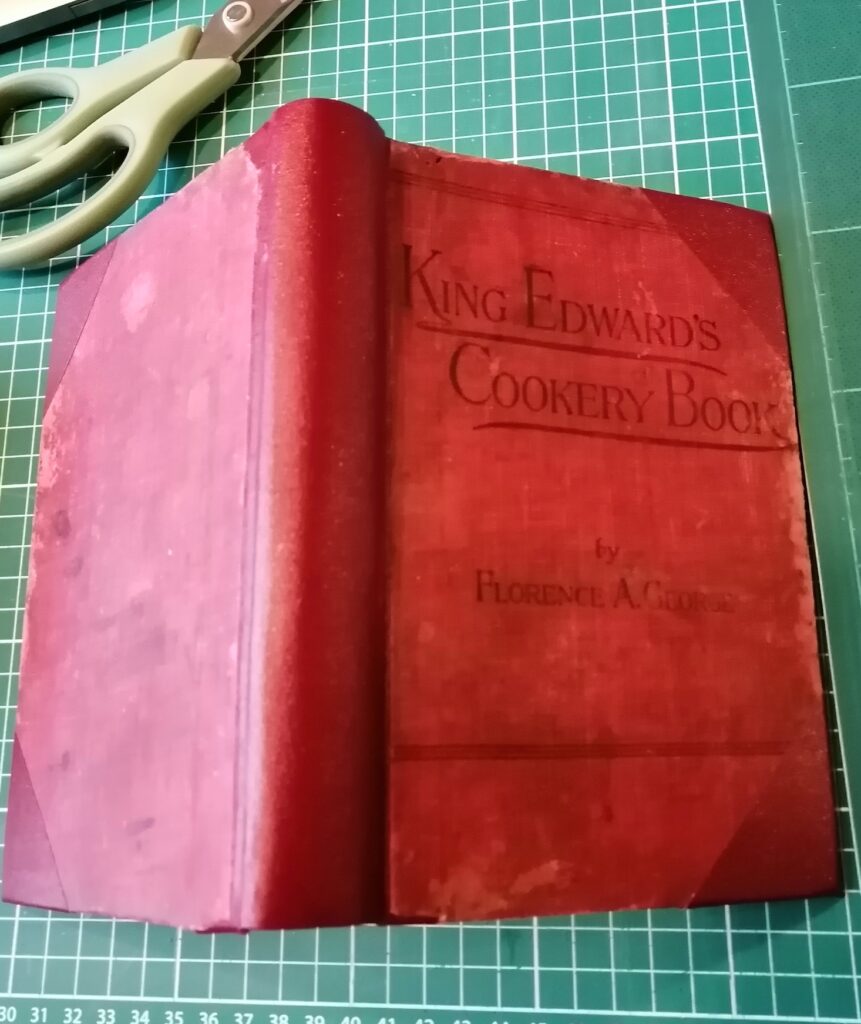
After Restoration:
Showing both front, spine and back work.
You can send photos of your book and we can discuss how to progress from there. As I live in Crosby near Liverpool, I can meet you ‘in town’ or more locally. A face to face meeting does help clarify the sort of work you need and helps me make an initial assessment on your book.

